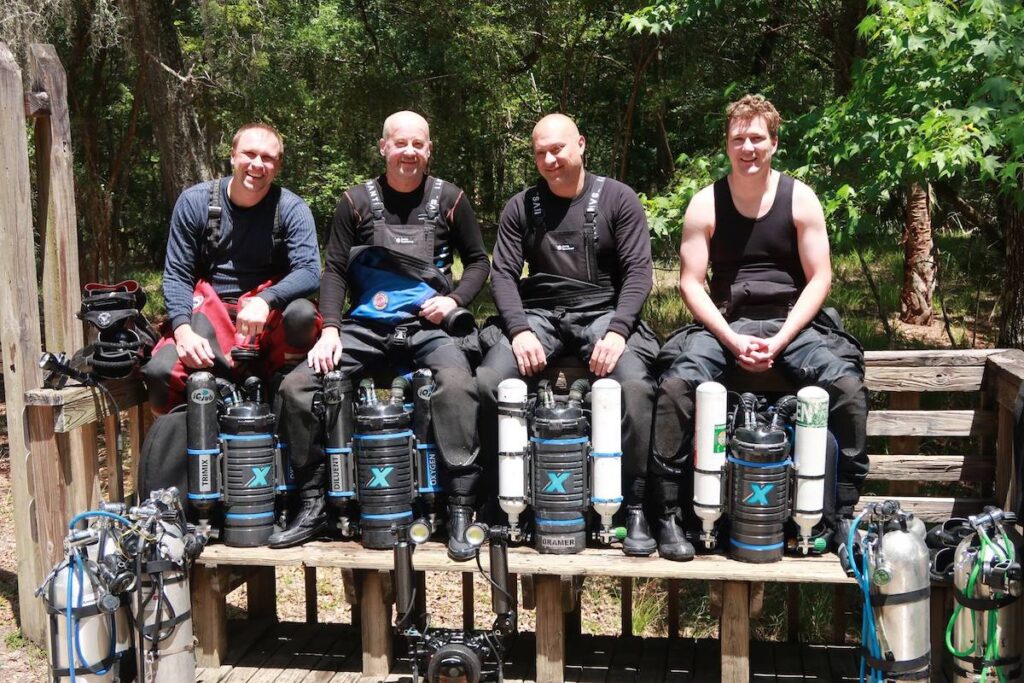Air Diluent CCR
The TDI Closed Circuit Rebreather (CCR) Air Diluent Diver Course is your first step into closed circuit rebreather diving and your first truly quiet dive experience!Using the latest technology in CCRs can maximize your gas supply and provide an optimum breathing gas for any depth by maintaining a constant partial pressure of oxygen. It’s like having a nitrox blending machine on your back!
During this course, your TDI Instructor will teach you all of the necessary skills to conduct no decompression CCR dives to a maximum depth of 30 metres/100 feet using air diluent.

What you can expect to learn
What you can expect to learn:
The TDI CCR Air Diluent Diver course takes an in-depth look at all of the following and more:
- History and evolution of rebreathers
- Comparison of open circuit (OC), closed circuit, and semi-closed circuit, rebreather (SCR) systems noting the pros and cons of each
- Practical mechanics of the system
- Gas physiology
- Proper scrubber packing: in accordance with manufacturers recommendation
- Electronic or manual systems design and maintenance
- Dive tables
- Dive computers
- Dive planning
- Emergency procedures
- Dive checklists
- Predive checks
Some of the required skills you will have to demonstrate include all of the following and more:
- All open water dives must be between 9 metres/30 feet and 30 metres/100 feet
- Two dives must be deeper than 20 metres/50 feet and one dive must be deeper than 27 metres/90 feet
- Partial pressure of oxygen not to exceed manufacturers recommendation or a working limit of 1.3
- All dives to be completed within CNS percentage limits with a recommend maximum of 80 percent of the total CNS limit
- Where the user opts for an automatic diluent valve (ADV) fitted and approved by the manufacturer, additional skills such as regular diluent gauge monitoring and addition control must be emphasized
- Unit build up and break down
- Predive checks
- Verify diluent and oxygen contents using an analyzer
- Demonstrate correct predive planning procedures
- Cover emergency procedures
- Use of BCD/dry suit and effective management of loop breathing volume for buoyancy control
- Stop at 13-6 metres/ 10-20 feet on descent for leak/bubble check
- Electronic system monitoring for partial pressure of oxygen levels (set point) and switching set points
- Use of lift bag, or surface marker buoy and reel, where appropriate
- Proper execution of the dive within all pre-determined limits
- Demonstration of safety stops at pre-determined depths
- Constant loop volume management
- Post dive clean of unit
- Diver maintenance of unit
Course Equipment Requirements
The following equipment is required for each student:
- A complete closed circuit rebreather. Any modifications to the unit must be approved by the manufacturer
- Minimum of 1 CCR dive computer, or bottom timer and depth gauge
- Mask, fins and a suitable line-cutting device
- Slate and pencil
- Reel with a minimum of 40 metres / 130 feet of line
- Lift-bag / delayed surface marker buoy (DSMB) with adequate lift and size for the dive environment
- Exposure suit appropriate for the open water environment where training will be conducted
- Access to an oxygen analyzer
- Appropriate weight
- Bailout gas supply (and an externally carried redundant air source).
Note: The instructor and any certified assistant must also carry a bailout gas supply for the student(s) during all open water sessions. This redundant gas source must be greater than the instructor and any certified assistant’s rebreather requirement
Course Prerequisites
- Minimum age of 18
- Provide proof of 20 logged open water dives. If completing a unit crossover, provide proof of 10 logged CCR dives in the last 12 months.
- Provide proof as a TDI Nitrox Diver or equivalent from agencies recognized by TDI
- If the rebreather is a TDI approved sidemount rebreather, the student must hold the TDI Sidemount Diver certification or equivalent, provide proof of 10 logged sidemount dives, and any additional requirements the sidemount rebreather manufacturer may have. Note: Nitrox diver and/or Advanced Nitrox diver may be combined with this course
Want to know more?
Ask more questions or schedule any of these courses Email Us.
